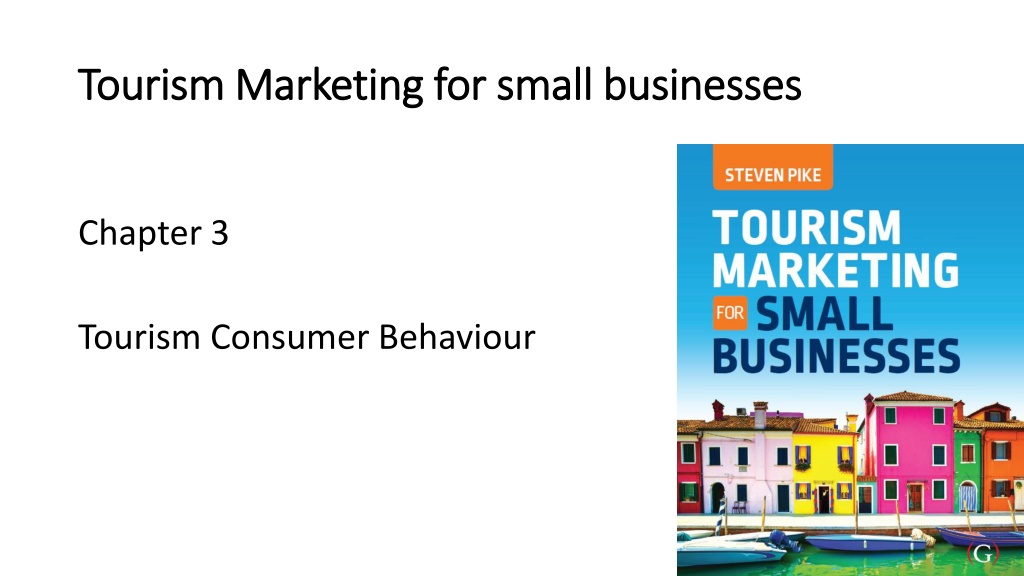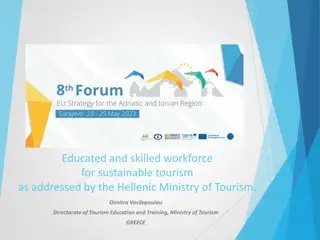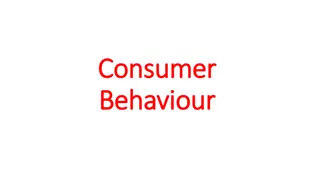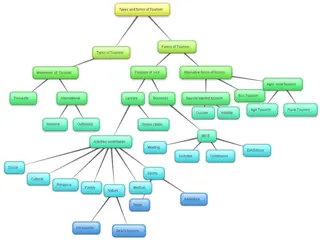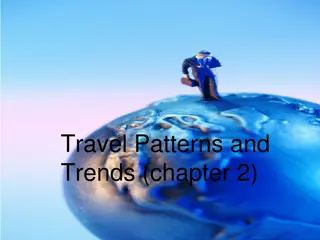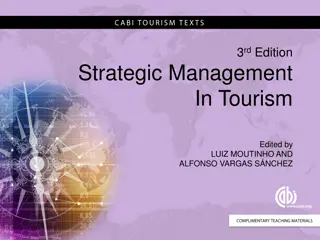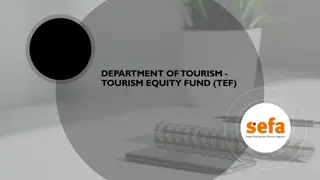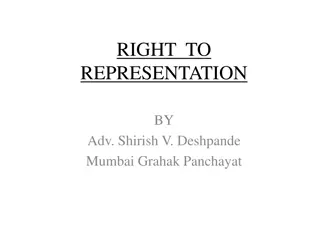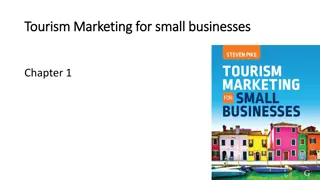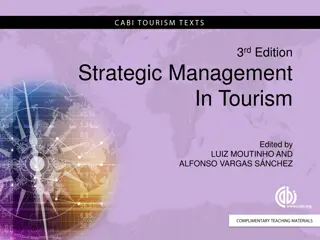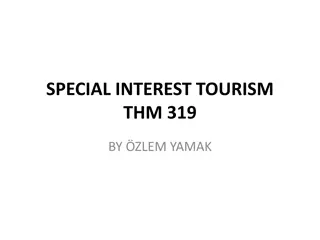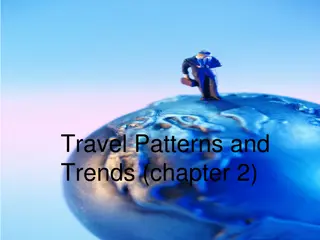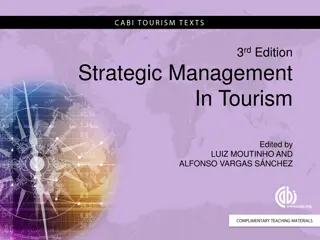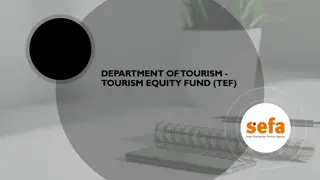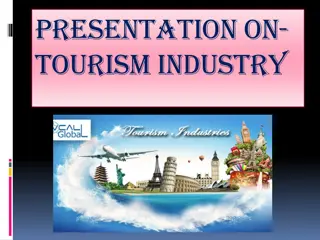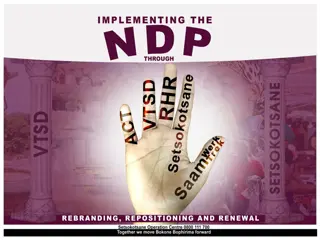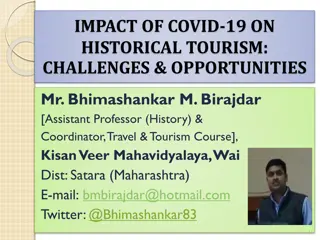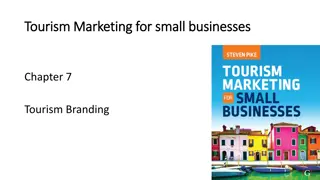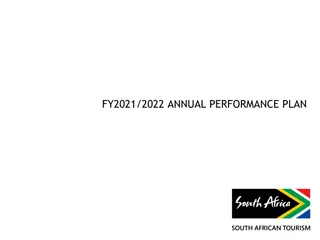Understanding Consumer Behavior in Tourism Marketing
Explore the intricacies of consumer behavior in tourism marketing, focusing on the key influences, motivations, and decision-making processes of individuals throughout the tourism experience. Learn how to develop, implement, and evaluate effective marketing strategies by understanding the needs, wants, and demands of target consumers.
Download Presentation

Please find below an Image/Link to download the presentation.
The content on the website is provided AS IS for your information and personal use only. It may not be sold, licensed, or shared on other websites without obtaining consent from the author. Download presentation by click this link. If you encounter any issues during the download, it is possible that the publisher has removed the file from their server.
E N D
Presentation Transcript
Tourism Marketing for small businesses Tourism Marketing for small businesses Chapter 3 Tourism Consumer Behaviour
Chapter learning aims Chapter learning aims To enhance your understanding of: consumer behaviour as central to the development, implementation and evaluation of tourism marketing activities a model of consumer behaviour in tourism the key internal and external influences on an individual s tourism buying behaviour
Key terms Key terms Consumer The term is used to encapsulate existing customers, potential customers, and non-customers (those who have chosen to not purchase our service). Needs, wants and demand A need is something an individual has to have to satisfy a felt state of deprivation (eg a drink to quench a thirst), and a want is how an individual communicates a need (eg a green tea). A want plus buying power represents demand. Motivation Motivation for a tourism experience represents a want arising that can t be met at home. This should not be confused with the reason for the travel experience, such as to visit friends and relatives . Tourism motivations can be physiological (eg relaxation), psychological (eg break from routine) or intellectual (eg to learn)
Consumer behaviour Consumer behaviour A marketing orientation dictates all marketing decisions are made with the interests of target consumers in mind Consumer behaviour is the most important and most complex issue faced by marketers Eg if the human mind was simple enough to understand, we would be too simple to understand it! Attempting to understand the needs, motivations and decision making processes (the why of buy) of unique individuals in mass markets, is central to the development, implementation and evaluation of marketing activities
Stages in a consumers tourism experience Stages in a consumer s tourism experience 1. Needs and wants recognition 2. Purchase decision making 3. Anticipation and expectations 4. Travel to the service location/On-site experience/Return travel 5. Post-trip satisfaction, memories and reflections
Figure 3.1 Model of consumer behaviour in tourism External environment The individual s influences internal influences Needs and wants recognition Purchase decision making A model of consumer behaviour in tourism Anticipation and expectations Word of mouth influence - other consumers Travel On site experiences Interactions with the environment, hosts, and other guests Return travel Post trip, satisfaction, memories and reflections
External influences on consumer behaviour External influences on consumer behaviour Destination attractiveness Success of small businesses is reliant to some extent on the competitiveness of the destination Market perceptions of the destination are a major influence Destinations at different stages of the product life-cycle appeal to different types of travellers
External influences on consumer behaviour External influences on consumer behaviour Culture and societal norms Community culture impacts on our decision making Values, ideas and attitudes provide reference points for social norms of behaviour Sub-cultures and reference groups to which people aspire to belong (or not!) Social networks Humans are social animals We rely on our social networks for ideas, advice, acceptance and feedback User-generated content on social media now swamps the amount of advertising by the global travel industry
Internal influences on consumer Internal influences on consumer- -traveller behaviour behaviour traveller Demographics Age, family life-cycle stage, place of residence, gender, income Perceptions (brand image) Attitude towards a brand is a function of: Cognition = awareness of the brand and its service features Affect = positive, negative or neutral feelings towards the brand Conation = level of intent to purchase Two main sources of image formation: Organic (natural) through our own assimilation of information eg media editorial, WoM Induced (forced) through the efforts of marketers eg advertising It is difficult to change people s perceptions
Continuum of image formation agents Continuum of image formation agents (Gartner, 1993) (Gartner, 1993) Agent category Examples Overt induced 1 Traditional advertising Overt induced 2 Information sourced from a travel agent Covert induced 1 Blatant celebrity endorsement on traditional advertising Covert induced 2 Disguised celebrity endorsement through seemingly unbiased reports, such as mass media editorial articles or product placement Autonomous News editorial and popular culture such as movies and television shows Unsolicited organic Unsolicited information received from friends, such as social media posts Solicited organic Information solicited from friends Completely organic Actual experience, such as when travelling
Internal influences on consumer Internal influences on consumer- -traveller behaviour behaviour traveller Travel experience We learn form our own travel experiences Experiences change our travel preferences over time Personality Personal values are preferences for certain types of behaviour and desired end states (eg happiness, status, safety) Learning style The way we notice, comprehend and retain information Eg VAK test (are you a Visual, Auditory or Kinaesthetic learner?)
Internal influences on consumer Internal influences on consumer- -traveller behaviour behaviour traveller Travel context The travel situation, the reason for the travel (eg honeymoon, short break) Attractiveness of destinations and brands often differs across travel situations Motivation Formed when an individual wants something to satisfy a need One of the most difficult aspects of tourism consumer behaviour to understand Generally based on physical (eg relaxation), psychological (eg achievement) or intellectual (eg to learn) needs and wants
Needs, wants and demand Needs, wants and demand A need is a felt state of deprivation (eg thirsty need something to quench my thirst) A want is how an individual communicates a need (eg a drink a beer) A want plus buying power represents demand
Activity Activity What motivated your last holiday? What motivated your last holiday? Think about your last holiday, and ask yourself what your motivation was? Can you recall what triggered recognition of the need to take the holiday? Ask your friends the same questions, and consider how easy or difficult it is to recall the motivation, remembering that the reason for the holiday was not necessarily the motivation.
Decision sets Decision sets For many travel purchase decisions, consumers are spoilt by choice of available brands However, we don t research the positives and negatives of all available brands Rather, we only consider a small number of brands (4 +/-2) Therefore, a key marketing goal is be in the consumer s decision set of 2 to 6 brands during purchase decision making
Decision sets Decision sets Awareness set How many destinations are you aware of? Available set How many of those destinations are available? Eg your budget Decision set ToMA (Top of mind awareness)
Activity Activity Your next short break holiday Your next short break holiday destination? destination? A short break holiday is a trip away from home of between one and four nights, and has been one of the fastest growing segments around the world in recent years. For your next short break, of all the destinations that are available to you, what is the first destination that comes to mind? What other destinations would you probably consider? The destinations you have listed in response to these two questions represent your decision set at this point in time. What is the mean decision set size for the class?
Anticipation and expectations Anticipation and expectations Personal Construct Theory (Kelly, 1955) Humans as quasi-scientists Our decisions are predications (hypotheses) about the likely outcome of future event (anticipation) Anticipation sets up our expectations (eg this brand will give me excellent service) If we didn t anticipate something, why would we be disappointed in what resulted? If we didn t anticipate someone would behave in a certain way, why would we be disappointed in their behaviour?
Activity Activity When and why were you last When and why were you last disappointed? disappointed? Think back to the last time you were disappointed with a service experience. Why were you disappointed? To what extent was your disappointment the result of your expectations? Think back to the last time you were disappointed by a friend or colleague or relative. Why were you disappointed? To what extent was your disappointment the result of your expectations?
Discussion questions Discussion questions Why does brand salience, in the form of membership of a consumer s decision set, represent a source of competitive advantage? Explain the difference between a belief and an attitude about a brand, and the key implications of this for marketers. Why is it suggested that marketers should reinforce positively held perceptions of the brand, rather than try to correct a negative brand image?
